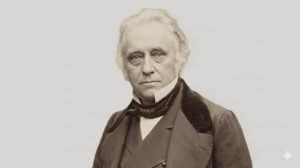Kerala Assembly passes resolution to rename state as Keralam: Origin of the two names
The resolution, moved by Kerala CM Pinarayi Vijayan, was passed unanimously. To change the name of a state, approval from the Union Ministry of Home Affairs is required.
 About 'Keralam', scholars believe it could have originated from 'Cheram'. (Photo by Nandagopal Rajan)
About 'Keralam', scholars believe it could have originated from 'Cheram'. (Photo by Nandagopal Rajan) The Kerala Assembly Wednesday passed a resolution urging the Centre to rename the state as “Keralam” in the Constitution and all office records.
The resolution, moved by Chief Minister Pinarayi Vijayan, was passed unanimously, with the Congress-led Opposition not suggesting any changes.
The resolution said, “The name of our state in Malayalam is Keralam. States were formed on the basis of language on November 1, 1956. That day is also observed as Kerala formation day. The demand for a united Kerala for all Malayalam-speaking communities has been strongly raised right from the days of the freedom struggle. However, the name of our state in the first Schedule of the Constitution has been written as Kerala. This Assembly is unanimously requesting the Union Government to take immediate steps under Article 3 of the Constitution to change the name of the state to Keralam.”
Origin of the names
There are several theories about the origin of the name ‘Kerala’. The earliest epigraphic record that mentions Kerala is emperor Asoka’s Rock Edict II of 257 BC. The inscription refers to the local ruler as Keralaputra (Sanskrit for “son of Kerala”), and also “son of Chera” referring to the Chera dynasty.
About ‘Keralam’, scholars believe it could have originated from ‘Cheram’.
Dr. Herman Gundert, a German scholar who published the first Malayalam-English dictionary, observed the word ‘keram’ is the Canarese (Kannada) form of cheram, and he described Keralam as Cheram — the region between Gokarnam and Kanyakumari. The origin of the term could possibly be from the root ‘cher’, which means to join. This meaning is clear in the compound word ‘Cheralam’, in which alam means region or land.
Demands for the modern state
The people speaking Malayalam had been ruled by various kings and princely states in the region. It was in the 1920s that the Aikya (unified) Kerala movement gathered momentum and a demand for a separate state for Malayalam-speaking people came up. It aimed at the integration of Malabar, Kochi and Travancore into one territory.
The Keralites who spoke the same language, shared common cultural traditions, and were unified by the same history, rituals and customs were inspired by the freedom movement to ask for unification and integration.
The state of Kerala after 1947
The merger and integration of princely states was a major step towards the formation of the state of Kerala after Independence. On 1 July, 1949, the two states of Travancore and Kochi were integrated, heralding the birth of the Travancore-Cochin State.
When it was decided to reorganise states on a linguistic basis, the State Reorganisation Commission of the Union Government recommended creation of the state of Kerala. The Commission under Syed Fazl Ali recommended the inclusion of the district of Malabar and the taluk of Kasargod to the Malayalam-speaking people’s state. It also recommended the exclusion of the four Southern taluks of Travancore viz Tovala, Agastheeswaram, Kalkulam and Vilayankode together with some parts of Shenkottai (all these taluks now part of Tamil Nadu).
The state of Kerala came into being on November 1, 1956. In Malayalam, the state was referred to as Keralam, while in English it was Kerala.
What is the process to rename a state in India?
Unlike in the case of renaming cities, to change the name of a state, approval from the Centre’s Ministry of Home Affairs (MHA) is required. This means that a Constitutional amendment becomes necessary to affect this change.
The proposal has to first come from the state government. The Union Ministry of Home Affairs (MHA) then takes over and gives its consent after it receives No Objection Certificates (NOCs) from several agencies such as the Ministry of Railways, Intelligence Bureau, Department of Posts, Survey of India and Registrar General of India.
If the proposal is accepted, the resolution, introduced as a Bill in the Parliament, becomes a law and the name of the state is changed thereafter.








- 01
- 02
- 03
- 04
- 05






























